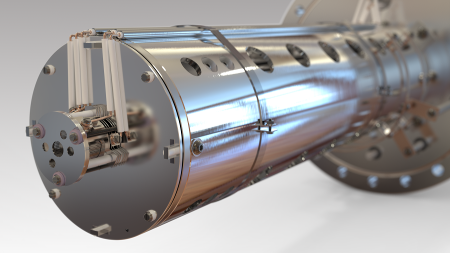Updated: Originally published 14/02/2018
The analytical technique of mass spectrometry has a broad range of uses including to identify unknown compounds within a material, measure the amount of a known material that is present in a sample, and to measure changes in sample composition in real time. Mass spectrometry is applied to solids , liquids, gases and vapour.
Read More: Real-Time Gas Analysis and Reaction Monitoring using Mass Spectrometry
The measurement of changes to gas and vapour composition in real time extends the application use of mass spectrometry to applications in fuel cells, catalysis, plasma, environment and electro-chemistry.

Mass Spectrometer Components
Every mass spectrometer consists of three basic components; the ion source, the analyzer, and the detector system.
The ion source is used to generate the gaseous ions from the sample, which are required to perform the measurement. The analyzer is used to separate the different types of ions according to their mass-to-charge ratio, and the detector reads these ions and records the amount in each group.
Mass Spectrometer Process
The first part of the process within a mass spectrometer is ionization, and this occurs when an atom within the sample gains a negative or positive charge. Most standard mass spectrometers work with positive ions.
Once the ions are generated, they are all accelerated to ensure they all have the same kinetic energy, and they are then deflected by a field according to their mass-to-charge ratio to filter the ions into a detector.
Mass Spectrometers from Hiden Analytical
Hiden Analytical has been designing, developing, and manufacturing mass spectrometers for the past 35 years. Our mass spectrometers are used for a range of different applications, including gas analysis, catalysis, thermal analysis, surface engineering, and surface analysis.
Our product range is vast and we manufacture mass spectrometers in different configurations and for mass ranges of 1-5000 AMU. Our versatile product offering enables the analysis of a variety of volatile organic, metal organic, and inorganic compounds.
If you would like to learn more about the basic operating principles of mass spectrometry, download our presentation on Quadrupole Mass Spectrometry Concepts
Or, if you would like any more information about our range of mass spectrometers, please send us a message.

